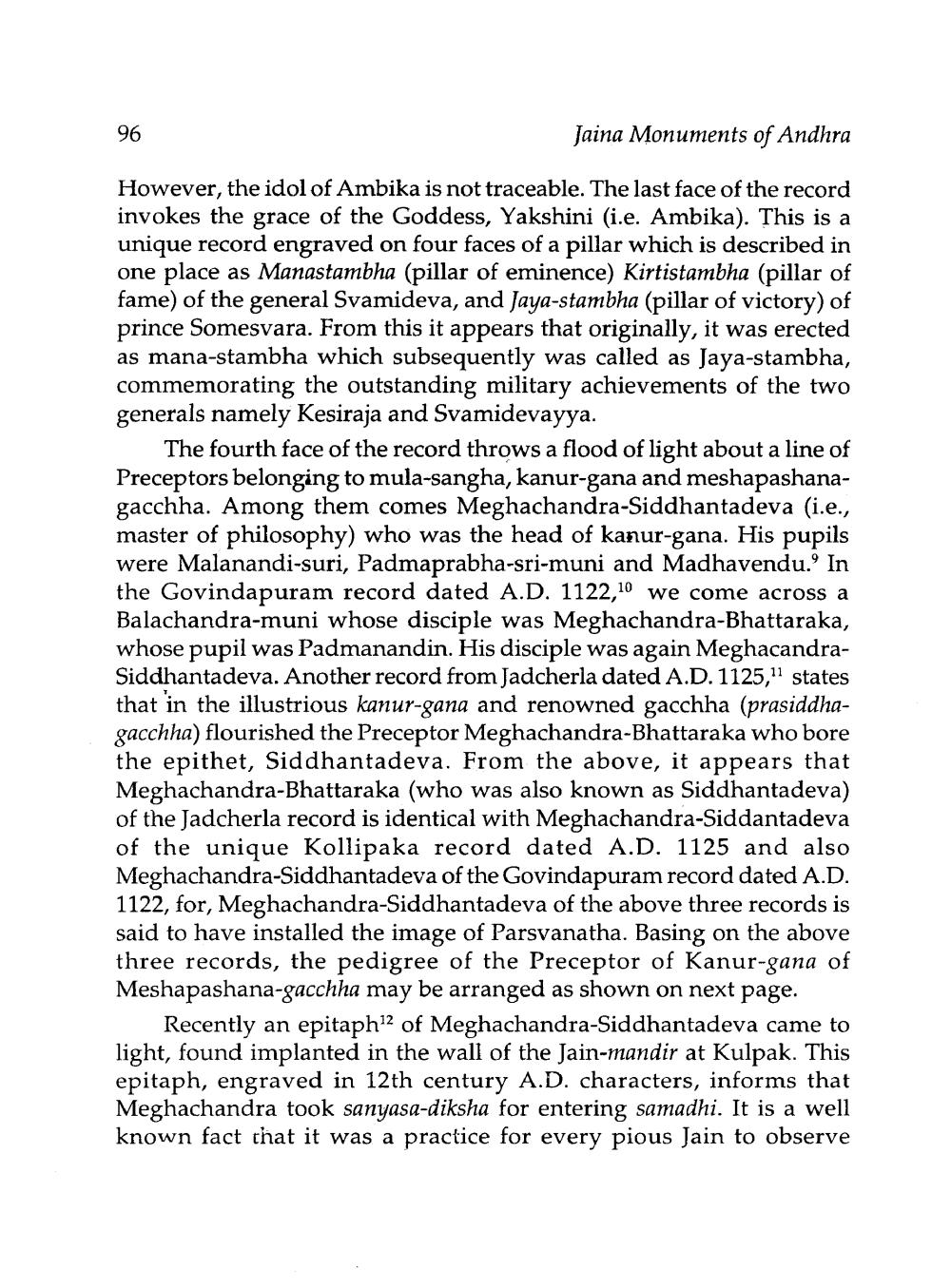________________
96
Jaina Monuments of Andhra
However, the idol of Ambika is not traceable. The last face of the record invokes the grace of the Goddess, Yakshini (i.e. Ambika). This is a unique record engraved on four faces of a pillar which is described in one place as Manastambha (pillar of eminence) Kirtistambha (pillar of fame) of the general Svamideva, and Jaya-stambha (pillar of victory) of prince Somesvara. From this it appears that originally, it was erected as mana-stambha which subsequently was called as Jaya-stambha, commemorating the outstanding military achievements of the two generals namely Kesiraja and Svamidevayya.
The fourth face of the record throws a flood of light about a line of Preceptors belonging to mula-sangha, kanur-gana and meshapashanagacchha. Among them comes Meghachandra-Siddhantadeva (i.e., master of philosophy) who was the head of kanur-gana. His pupils were Malanandi-suri, Padmaprabha-sri-muni and Madhavendu.' In the Govindapuram record dated A.D. 1122,10 we come across a Balachandra-muni whose disciple was Meghachandra-Bhattaraka, whose pupil was Padmanandin. His disciple was again MeghacandraSiddhantadeva. Another record from Jadcherla dated A.D. 1125,11 states that in the illustrious kanur-gana and renowned gacchha (prasiddhagacchha) flourished the Preceptor Meghachandra-Bhattaraka who bore the epithet, Siddhantadeva. From the above, it appears that Meghachandra-Bhattaraka (who was also known as Siddhantadeva) of the Jadcherla record is identical with Meghachandra-Siddantadeva of the unique Kollipaka record dated A.D. 1125 and also Meghachandra-Siddhantadeva of the Govindapuram record dated A.D. 1122, for, Meghachandra-Siddhantadeva of the above three records is said to have installed the image of Parsvanatha. Basing on the above three records, the pedigree of the Preceptor of Kanur-gana of Meshapashana-gacchha may be arranged as shown on next page.
Recently an epitaph12 of Meghachandra-Siddhantadeva came to light, found implanted in the wall of the Jain-mandir at Kulpak. This epitaph, engraved in 12th century A.D. characters, informs that Meghachandra took sanyasa-diksha for entering samadhi. It is a well known fact that it was a practice for every pious Jain to observe




